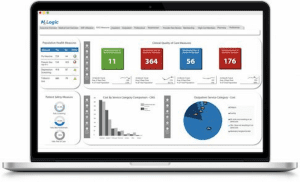How Regulatory Requirements Are Affecting Medicare Health Plan Administration
The healthcare landscape is constantly evolving and Medicare health plan administrators are facing a wave of new regulatory requirements that significantly impact their operations.
These changes are designed to enhance transparency, equity, and compliance, ensuring enrollees receive high-quality care consistent with Medicare’s evolving standards.
For Medicare Advantage Organizations (MAOs), the path forward requires careful alignment with the latest rules to avoid penalties while ensuring enrollees are well-served.
Key Health Plan Areas Most Affected By Recent Medicare Compliance Changes
Health plans are facing significant regulatory changes, particularly in the areas of configuration, product and enrollment, appeals and grievances, claims, and data analytics.
Configuration processes now require greater transparency, annual reviews, and alignment with clinical guidelines to ensure timely access to care.
New rules impact product offerings, prior authorizations, and culturally competent enrollment, while appeals and claims processes must adhere to stricter timelines and documentation requirements. Additionally, data privacy, cybersecurity, and reporting standards have been heightened to ensure compliance across the board.
These updates are designed to improve care quality and protect enrollees while holding health plans accountable.
Let’s dive into the specific changes in requirements to be aware of.
Configuration Is The Most Impacted With Nine New Regulatory Requirements
Configuration processes are the most affected, with nine new regulatory requirements now governing how MAOs manage coverage, emphasizing transparency and alignment with Medicare standards.
- Adherence to Coverage Determinations: MAOs are required to align with updated local and national coverage determinations, ensuring that all coverage decisions meet Medicare standards.
- Transparency of Coverage Criteria: Health plans must make internal coverage criteria publicly accessible, ensuring that enrollees and providers understand how coverage decisions are made.
- Compliance with Post-Claim Audits: Post-claim audits are subject to updated regulations, meaning that plans must ensure all claim-related activities meet Medicare standards.
- Timely Access to Care: Configuration processes must guarantee timely access to care, which is critical to maintaining high-quality service for enrollees.
- Documentation of Clinical Criteria: Detailed documentation and justification must be maintained for any clinical criteria not covered by traditional Medicare, ensuring transparency and compliance with regulatory standards.
- Annual Review of Prior Authorizations: MAOs are now required to review and potentially revise prior authorizations on an annual basis to ensure they align with current guidelines and clinical needs.
- Transparent Configuration Processes: Health plans must ensure that configuration processes are transparent, especially concerning coverage criteria and authorizations.
- Alignment with Clinical Guidelines: Utilization management processes must be clearly aligned with clinical guidelines to ensure that decisions are medically appropriate.
- Communication with CMS: All configuration changes must be communicated to the Centers for Medicare & Medicaid Services (CMS) through a defined process to avoid non-compliance penalties.
These updates reflect the increasing emphasis on consistency, transparency, and timeliness, which is vital for ensuring that enrollees receive the care they need without unnecessary delays or confusion.
Product And Enrollment Each Have Five New Regulatory Requirements
The regulatory updates extend into product and enrollment areas, with five new requirements that health plans must address.

Product
- Prior Authorization Policies: New prior authorization policies have been implemented for specific products to ensure that medical necessity is met, balancing access without imposing undue restrictions.
- Formulary Flexibility: MAOs are now allowed greater flexibility in formularies, particularly concerning generics and biological products, making it easier to offer cost-effective alternatives.
- Agent/Broker Monitoring: There are enhanced monitoring requirements for agent and broker activities to ensure they comply with Medicare’s marketing rules.
- Supplemental Benefits: Updated protocols for offering supplemental benefits have been introduced, aligning these benefits with Medicare’s overall objectives.
- Consistency Across Products: Internal coverage criteria must be consistent across all products offered by MAOs, promoting fairness and reducing confusion among enrollees.
Enrollment
- Special Enrollment Periods (SEPs): Expanded SEP rules provide more opportunities for enrollees to switch plans under specific conditions, giving them greater flexibility.
- Culturally Competent Enrollment: Health plans are now required to implement culturally competent enrollment procedures, ensuring that diverse populations receive appropriate and effective guidance and support.
- Telephone Enrollment: Stricter guidelines govern telephone enrollments, ensuring that all enrollees fully understand the plan they are signing up for.
- Fraud Prevention: Enhanced scrutiny is required during the enrollment process to prevent fraud, protecting both the plan and the enrollees.
- Documentation Requirements: New documentation requirements ensure that all enrollment activities are properly recorded, providing an audit trail for compliance and fraud prevention.
These updates highlight the importance of maintaining robust, transparent, and culturally sensitive enrollment practices, ensuring that beneficiaries are well-informed and protected during the enrollment process.
Appeals And Grievances, Claims, And Data Analytics Each Have Four New Regulatory Requirements
The appeals and grievances process is essential to ensuring that beneficiaries’ concerns are addressed swiftly and effectively.
Appeals & Grievances
- Stricter Timelines: Appeals must now be resolved within more stringent timelines, ensuring faster resolutions and improved beneficiary satisfaction.
- Detailed Documentation: All grievance cases must be documented in greater detail, ensuring that all issues are properly addressed and reported.
- Mandatory Training: Staff members handling appeals must undergo mandatory training to stay current with the latest regulatory requirements.
- Reporting Standards: New reporting standards for appeals outcomes have been introduced, ensuring greater transparency and accountability in the process.
Claims
- Processing Standards: New standards for claims processing require alignment with traditional Medicare, ensuring consistency in the way claims are handled.
- Post-Claim Audits: Updated guidelines govern post-claim audits, ensuring that claims are compliant with Medicare rules.
- Handling of Rejected Claims: Stricter compliance rules now apply to the handling of rejected claims, ensuring that beneficiaries are not unfairly denied coverage.
- Transparency in Claims Reviews: Enhanced transparency is required in the claims review process, allowing beneficiaries to clearly understand the rationale behind approvals or denials.
Data Analytics
- Enhanced Reporting Requirements: Reporting requirements have been enhanced to ensure that health plans submit more accurate and comprehensive data.
- Analytics for Compliance Monitoring: The use of data analytics in monitoring compliance is now mandated, ensuring that plans are staying within regulatory guidelines.
- Data Privacy and Security: New guidelines for data privacy and security are in place, ensuring that enrollee information is protected.
- Clinical Integration: Stricter standards require that data analytics be integrated with clinical processes to enhance the quality of care delivered.
These changes ensure that beneficiaries don’t face extended delays when disputing coverage decisions, contributing to a more responsive and patient-centered system.
Customer Service, Fulfillment, IT, And Utilization Management Each Have Two New Regulatory Changes
In addition to the core areas of configuration, claims, and data analytics, several other key aspects of Medicare health plan administration are undergoing regulatory updates.

Customer Service
- Handling Inquiries: New rules govern how customer service representatives handle inquiries, ensuring that enrollees receive clear, consistent, and accurate information about their benefits.
- Mandatory Training: Customer service representatives are now required to undergo mandatory training to ensure they are fully equipped to assist enrollees and remain compliant with Medicare’s standards.
Fulfillment
- Stricter Controls on Materials: Stricter controls have been introduced over plan-related materials distribution to ensure that enrollees receive accurate and timely information.
- Enhanced Monitoring: Enhanced monitoring procedures are now required to prevent errors and delays in material distribution, ensuring that all enrollee communications are prompt and error-free.
IT
- Cybersecurity Requirements: New cybersecurity regulations have been introduced to safeguard enrollee data, requiring health plans to implement advanced data protection protocols.
- Regular IT Audits: Health plans must conduct regular audits of their IT systems to ensure compliance with the latest cybersecurity requirements and to safeguard against breaches.
Utilization Management
- Annual Policy Review: The Utilization Management Committee must review all policies on an annual basis to ensure that they are in line with current guidelines and consistent with traditional Medicare standards.
- Stricter Guidelines for Prior Authorization: New guidelines have been introduced for prior authorization processes to ensure that decisions are medically necessary and consistent across the board.
By implementing these new standards, health plans can improve customer interactions, safeguard sensitive data, and ensure that care decisions are both consistent and medically necessary.
Reporting Requirements Have Become More Stringent

Health plan reporting requirements have become significantly more stringent, with a heightened focus on accuracy, timeliness, and comprehensive documentation. Plans are now obligated to submit more detailed reports covering a wide range of metrics, ensuring that all aspects of compliance and enrollee care are thoroughly documented.
These enhanced reporting standards are designed to increase transparency, providing CMS with a clearer and more detailed picture of health plan performance. Failure to meet these new requirements could result in penalties, making it crucial for plans to prioritize timely and precise data submission.
Ensuring Compliance and Quality Care
These regulatory changes reflect CMS’s commitment to enhancing transparency, equity, and quality across all aspects of Medicare Advantage and Part D plans. For plan administrators, this means thoroughly reviewing and implementing these changes to remain compliant while improving the overall experience for enrollees.
These regulatory changes are designed to ensure that enrollees receive the highest standard of care, fully aligned with Medicare’s continuously evolving requirements. Through greater transparency, data-driven processes, and heightened compliance measures, MAOs can successfully navigate these updates, protecting their organization and the individuals they serve.
Get expert guidance to navigate the complex and ever-changing regulatory requirements facing Medicare Advantage Organizations.
Our expert consultants leverage our AxisConnect™ suite of services to provide extensive health plan consulting to unlock your organization’s full potential. Our seasoned team collaborates with you in areas like regulatory affairs, technology, and operational efficiency to ensure you meet all requirements. Connect with our team today.
Author:

Kelly Thao
Sr. Compliance Analyst
HealthAxis







 Additionally, following compliance regulations often leads to better quality care for your members. Your members will trust you more and appreciate their improved experience; and in return, be more likely to retain their membership and share with their friends and family, which can provide organic growth for your organization.
Additionally, following compliance regulations often leads to better quality care for your members. Your members will trust you more and appreciate their improved experience; and in return, be more likely to retain their membership and share with their friends and family, which can provide organic growth for your organization.







